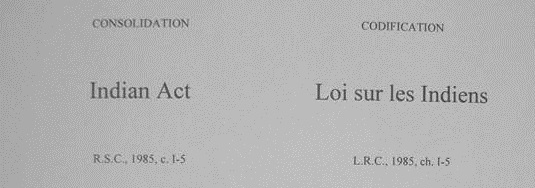Ethnocentrism is a conscious or unconscious bias which distorts our understanding of reality. It overemphasizes our group’s perspective as a reference point. This bias often leads to a misinterpretation of realities which differ from those of the group to which we belong. Ethnocentric thought can also lead to a more negative opinion of foreign groups and to a superior view of our own.

Definition of Ethnocentrism
Ethnocentric reasoning divides humans into several groups, but more specifically into two categories: those who belong to our group (“us”) and those who do not (“others”). It emphasizes the differences between the membership group and the “others.” As a result, it leads to the perspective that the membership group’s situation is the norm for everyone. It could even encourage a belief that one’s group views are superior to that of other groups. The realities of “others” are thus perceived as strange, inferior or even threatening.
Ethnocentrism is born from our over-dependence on our perspective, used too often as a reference to evaluate other groups’ realities. When we only rely on our own limited experience, we can form unfounded presumptions on the realities of other groups.
The concept of ethnocentrism is related to racism. The latter results from ethnocentric reasoning used to discriminate against the ethnicity and race of “others.”
Ethnocentrism in Canada
Historically speaking, ethnocentrism plays an important role when a group, usually dominant, wants to force another to adopt its ways or preferences. In Canada, this was especially the case between Indigenous peoples and French or British settlers who sought to impose their practices while eradicating Indigenous cultures. After Confederation in 1867, the federal government implemented ethnocentric and racist measures against Indigenous peoples, such as the Indian Act and the residential schools. The goal was to force Indigenous peoples to abandon their traditions and adopt western norms and customs. This attitude toward Indigenous communities persisted and led to the Sixties Scoop among others. (See also: Truth and Reconciliation Commission; Racial Segregation of Indigenous Peoples in Canada.) The Oka Crisis of 1990 was also caused by an ethnocentric mentality which ignored the importance of traditional lands to the Kanyen’kehà:ka nation.

Ethnocentrism largely affected ethnic and cultural minorities in Canada. These minorities faced obstacles born out of the majority population’s ethnocentric biases. Canadian society often excluded minorities due to ethnic or racial differences. Ethnocentric attitudes manifested as prejudice and discrimination, but also in the form of exclusive government policies. These included, for example, the Chinese Immigration Act of 1923, the hostilities aimed at the Indian immigrants upon their arrival aboard the SS Komagata Maru in 1914 and the internment of Japanese Canadians during the Second World War. (See Racial Segregation of Asian Canadians; Anti-Asian Racism in Canada.) Canadian society also segregated Black people based on white people’s view that people of different races need to be kept apart. (See Racial Segregation of Black People in Canada.) This was particularly present in schools where Black students and white students were separated. (See Racial Segregation of Black Students in Canadian Schools.)

Ethnocentrism had a role in shaping relations between anglophones and francophones in Canada. After the Conquest of New France, the Royal Proclamation of 1763 aimed to assimilate French Canadians. It imposed British laws and customs on French Canadian society. (See also Quebec Act.) In the late 19th and early 20th centuries, some predominantly anglophone provinces attempted to limit francophone and Catholic education. (See New Brunswick Schools Question, Manitoba Schools Question, North West Schools Question, Ontario Schools Question.)
Ethnocentrism in the 21st Century
Ethnocentrism and its consequences are still present today. This creates considerable obstacles for groups outside the dominant majority. Racialized minorities (non-white groups) are, for example, much more likely than white people to say they have been victims of discrimination because of their race. (See also Visible Minority.)
Religion is also another vector of ethnocentrism and discrimination. The hostility aimed at Muslim Canadians after the 9/11 attacks was particularly severe. Muslim Canadians (see Islam) and Jewish Canadians are the two religious minorities who are the most at risk to be targeted by hate crimes based on religion. (See also Quebec City Mosque Shooting, Anti-Semitism in Canada)
Some religious minorities are targeted by ethnocentric policies such as, for example, the Quebec Values Charter and the Act Respecting the Laicity of the State (Bill 21). These policies aimed specifically to limit the wearing of religious symbols in public service to respect state secularism ― an important principle for most people in Quebec. In May 2020, almost two out of three people in Quebec (64 per cent) said that they were in favour of Bill 21. However, these positions trouble some religious minorities like the Jewish, Muslim and Sikh communities. Some activists argue that these measures are discriminatory against minorities and reinforce systemic racism. The logic being that these policies impose a perspective on secularism from the majority society without accounting for the realities of religious minorities with regard to religious symbols.

 Share on Facebook
Share on Facebook Share on X
Share on X Share by Email
Share by Email Share on Google Classroom
Share on Google Classroom







